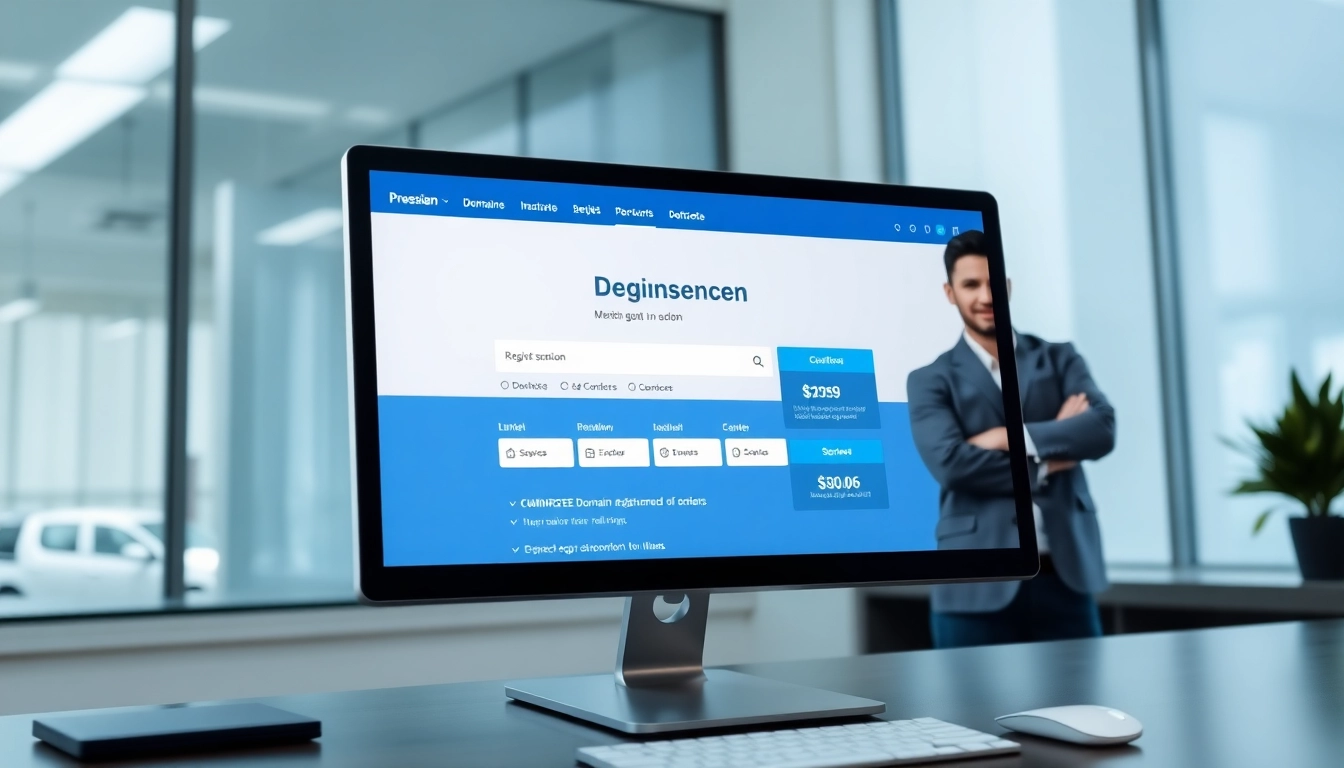The Essential Role of a Web Developer in Modern Website Building
In today’s digital landscape, a well-designed and performant website is crucial for establishing brand authority and driving online success. Central to achieving this goal is the role of a skilled web developer. These professionals are pivotal in transforming concepts into functional, user-friendly, and optimized websites that rank higher in search engine results and deliver excellent user experiences. From crafting custom code to integrating the latest SEO best practices, a proficient web developer lays the foundation for a website’s long-term success, especially when aligned with comprehensive optimization strategies.
What Does a Web Developer Do in 2024?
In 2024, the responsibilities of a web developer extend beyond basic coding. They are tasked with ensuring website security, optimizing load times, enhancing mobile responsiveness, and integrating advanced SEO strategies. They develop with user experience in mind, create scalable architectures, and implement accessibilities standards compliant with the latest regulations. Additionally, they collaborate closely with designers, content strategists, and SEO specialists to produce cohesive digital assets that advance a brand’s online presence.
Key Skills Every Web Developer Must Have
To excel in modern web development, professionals must possess a blend of technical and strategic skills. These include mastery of HTML5, CSS3, JavaScript, and frameworks like React or Vue.js for front-end development. Back-end expertise in PHP, Node.js, or Python is equally vital for server-side processes. A deep understanding of CMS platforms like WordPress or Shopify is essential for quick deployment and customization. Moreover, proficiency in performance optimization tools such as caching plugins, image compression, and code minification directly impacts website speed, which is critical for SEO.
Difference Between Front-End and Back-End Web Development
Front-end developers focus on the visual and interactive aspects – creating layouts, implementing user interfaces, and ensuring cross-browser compatibility. In contrast, back-end developers handle server management, database interactions, and application logic, ensuring that user requests are processed efficiently. Both roles are integral to delivering a seamless user experience, but today’s web development often requires full-stack proficiency for comprehensive control over a website’s functionality and performance. For example, integrating SEO strategies such as structured data or managing server responses for page speed improvements often involves an understanding of both layers.
Essential Website Optimization Techniques for Higher Rankings
Improving Page Load Speed with Caching and Compression
Page load speed remains a pivotal factor for both user experience and SEO. Slow websites lead to higher bounce rates and decreased rankings. Implementing effective caching mechanisms, such as browser caching and server-side caching with plugins like WP Super Cache or W3 Total Cache, significantly reduces server response times. Additionally, compressing images with tools like Smush or ShortPixel ensures visual quality without compromising load times. Combining these with minification of CSS, JavaScript, and HTML optimizes delivery, reducing load times—an essential step, especially considering that the average website load time is critical in 2024. With load speeds approaching or exceeding 14 seconds, as noted in recent audits, targeted enhancements can turn the tide for your website’s performance.
Optimizing Content Structure and HTML Tags
Proper HTML structure and semantic tags improve both SEO and accessibility. Using headers (H1-H6) thoughtfully, with focus keywords incorporated naturally, helps search engines understand content hierarchy. Structuring content with clear sections, bullet points, and internal links enhances readability and engagement. Meta titles and descriptions should be crafted for optimal character length, including focus keywords and power words to improve click-through rates. Consistent use of schema markup and rich snippets further elevate a website’s appearance in search results, drawing more organic traffic.
Image Compression and Proper Alt Tags for SEO
High-resolution images significantly slow down page load if not optimized. Compress images with respected tools, ensuring minimal quality loss. Equally important is assigning descriptive, keyword-rich alt tags that improve image search visibility and accessibility. For example, an image of a “USA web developer designing a mobile-responsive website” with appropriate alt text can contribute to local SEO efforts and overall content relevance.
How a Professional Web Developer Enhances SEO and User Experience
Application of SEO Best Practices During Development
Embedding SEO into the development phase is crucial. This includes clean code standards, proper URL structures, and strategic keyword placement. Developing with SEO in mind ensures fast indexing and relevance in search results. Implementing canonical tags, hreflang for multilingual sites, and structured data improves visibility and reduces duplicate content issues. A proactive developer also ensures core web vitals, such as first contentful paint (FCP) and cumulative layout shift (CLS), are within recommended thresholds, which directly affect rankings.
Ensuring Mobile Responsiveness and Fast Load Times
With over 60% of global web traffic coming from mobile devices, responsive design is no longer optional. Using flexible layouts, scalable images, and viewport meta tags guarantees optimal display across devices. Note that load time on mobile is often slower due to network variability; hence, techniques like AMP (Accelerated Mobile Pages) and lazy loading are applied to bolster speed without sacrificing content richness.
Integrating In-Content Links and Backlink Strategies
Strategic internal linking improves user navigation and distributes link equity across your site. Additionally, natural backlinking on authority blogs enhances domain authority and search engine trust. Building backlinks through guest posts, outreach to reputable blogs, and content collaboration, especially on niche-specific platforms, signals trust and popularity to Google. Real, contextual backlinks from genuine sources outperform spammy link schemes, proving essential for sustained growth in rankings.
Choosing the Right Domain and Building Backlinks for Authority
Tips for Selecting a Perfect Domain Name
Domain choice directly influences branding and SEO. Opt for a short, memorable domain that reflects your business or niche. Incorporate relevant keywords naturally; for example, “BestWebDevServices.com” or “USAWebDeveloper.com” can boost keyword relevance. Ensure the domain extension (.com, .net, .org) aligns with your target audience and is regarded as trustworthy. Avoid hyphens or complex spellings that hinder recall and typing ease.
Natural In-Content Backlink Placement on Authority Blogs
Backlink building should prioritize authentic, contextual links embedded naturally within high-authority blogs. This is achieved by producing original, valuable content that resonates with the blog’s audience, prompting owners to include your links naturally. Outreach efforts, content collaborations, or guest posting on relevant industry blogs can facilitate this process. Real blog posts stemming from genuine relationships and quality content maximize impact and longevity of backlinks.
Impact of Backlinks on Search Engine Rankings in 2024
Backlinks continue to be a major ranking factor in 2024. Search engines interpret backlinks as votes of confidence. However, the focus has shifted to the quality rather than quantity. Backlinks from authoritative, relevant sites indicate to Google that your website is trustworthy and valuable. Additionally, external links from your website to backlinks-rich blogs amplify authority signals. A well-structured backlink profile that aligns with Google’s E-A-T (Expertise, Authoritativeness, Trustworthiness) guidelines creates a sustainable ranking advantage.
Working with a Skilled Web Developer: What to Expect and How to Get Started
Assessing Developer Portfolios and Expertise
When selecting a web developer, review portfolios carefully. Look for experience in WordPress and eCommerce development, proficiency in HTML and CSS, and a track record of delivering fast, SEO-optimized websites. Examples of previous projects, client reviews, and technical certifications provide insight into their capabilities. A developer who stays updated with the latest SEO and performance trends will ensure your website remains competitive.
Project Timeline, Pricing, and Quality Guarantees
Transparent communication regarding project milestones and timelines is essential. Expect comprehensive proposals detailing scope, deliverables, and support. Competitive pricing should reflect the complexity of your project, but always prioritize quality over cheapest options. Reputable developers offer guarantees, revisions, and ongoing support, cementing a long-term partnership essential for continual SEO improvements.
Long-Term SEO and Website Performance Strategies
Building a website is just the beginning. Continuous optimization—for page speed, backlink profile, content updates, and technical health—is vital. An experienced web developer can assist in ongoing SEO audits, performance monitoring, and strategic content planning, ensuring your site adapts to search engine algorithm changes and maintains high rankings over time.












